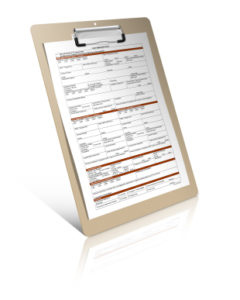How does a homeowners insurance deductible work?
Free Home Insurance Comparison
Compare Quotes From Top Companies and Save
Secured with SHA-256 Encryption
Joel Ohman
Certified Financial Planner
Joel Ohman is the CEO of a private equity-backed digital media company. He is a CERTIFIED FINANCIAL PLANNER™, author, angel investor, and serial entrepreneur who loves creating new things, whether books or businesses. He has also previously served as the founder and resident CFP® of a national insurance agency, Real Time Health Quotes. He also has an MBA from the University of South Florida. ...
Certified Financial Planner
UPDATED: Apr 10, 2022
It’s all about you. We want to help you make the right coverage choices.
Advertiser Disclosure: We strive to help you make confident car insurance decisions. Comparison shopping should be easy. We are not affiliated with any one car insurance company and cannot guarantee quotes from any single company.
Our partnerships don’t influence our content. Our opinions are our own. To compare quotes from top car companies please enter your ZIP code above to use the free quote tool. The more quotes you compare, the more chances to save.
Editorial Guidelines: We are a free online resource for anyone interested in learning more about auto insurance. Our goal is to be an objective, third-party resource for everything auto insurance related. We update our site regularly, and all content is reviewed by auto insurance experts.
UPDATED: Apr 10, 2022
It’s all about you. We want to help you make the right coverage choices.
Advertiser Disclosure: We strive to help you make confident car insurance decisions. Comparison shopping should be easy. We are not affiliated with any one car insurance company and cannot guarantee quotes from any single company.
Our partnerships don’t influence our content. Our opinions are our own. To compare quotes from top car companies please enter your ZIP code above to use the free quote tool. The more quotes you compare, the more chances to save.
On This Page
A vital clause in your insurance policy is that pertaining to a deductible. A deductible is, essentially, the amount deducted from a loss paid by the insurance company.
As policyholder, you agree with the deductible and the insurance company’s right to subtract it from any loss. A deductible is the amount you, as policyholder, agree to pay in the event of a loss.
 There are two types of deductibles:
There are two types of deductibles:
- Specific amount – in which a specified amount is deducted from the loss, if any. For example, a $500 deductible means that a total of $500 will be removed from any loss payment.
- Percentage deductibles – in which a percentage of the insured value is deducted from any loss which may occur. For example, if your property is insured for $200,000 and the percentage deductible agreed upon is 1%. In this situation, the dollar amount of the deductible would be $2,000.
Deductibles apply differently to property damage losses than to liability or medical insurance policies.
Property damage has a flat deductible; whereas usually no deductible applies to liability coverage.
Medical insurance usually has a policy deductible as well as a coinsurance clause.
Insurance is state regulated, the insurance companies must follow the state law strictly.
State laws provide exact language for deductibles and regulate the way they are applied.
Be sure to always compare quotes first by using our FREE tool above.
Named Peril Deductibles
Deductibles may apply according to the peril involved. Special hurricane deductibles may apply as well as wind and hail deductibles. These deductibles are usually offered when there is a high incidence of the particular hazard.
Over twenty years ago, Florida insurance law allowed for varying deductibles for hurricane coverage.
Some areas of the Midw
Earthquake insurance is separate from the home insurance contract.
Special policies are written to provide earthquake insurance and the deductibles that apply are ordinarily expressed in percentages. A 15% deductible is usual.
Special limits also apply to earthquake insurance. For earthquake insurance in California, go to the California Earthquake Authority (CEA).
Flood insurance, too, has deductibles that apply in various amounts.
Information about flood insurance can be obtained by going to FloodSmart, for a discussion of the deductibles, limits, and coverage.
Deductibles Can Reduce Premiums
Raising a deductible can save money because various insurance companies offer credits for higher deductibles.
Shopping for insurance will help you determine the amount of credit an insurance company will give for higher deductibles.
Getting Insurance Quotations to Help Save Premium Money
Shopping for insurance is the best way to get a beneficial price on insurance. Annually, you should examine your insurance policy for the following things:
- Adequate amounts of coverage – both for property coverage and liability coverage
- Actual cash value coverage or replacement cost coverage
- Perils covered
- Deductibles available and provided
- Additional coverage you may wish to purchase
- Financial ratings and complaint ratios for each of the insurance companies you approach for quotations
Adequate Amounts of Coverage
Examine the amounts of insurance you purchase on your property to make certain that they are adequate for your purposes. Building coverage is quite important because property values fluctuate with the market and building costs.
Be careful not to insure your dwelling for the price you paid upon purchase. That cost reflects the cost of land, amenities such as location, and market price. There are better ways of arriving at building costs:
- Property insurance appraisal conducted by a professional firm, based upon area and construction. This involves an actual inspection of the premises.
- Estimate of value conducted by your insurance agent, again based upon area and construction
- Consult an online calculator. A free one is available at Building-Cost.net for your own estimate.
The remainder of hazard insurance under a home insurance policy is set by a formula, but you should make certain the formula fits your own needs.
- Building cost – as you estimated above
- Other structures such as detached garages and fences – 10% of the building value
- Contents – 50% of the building value – Limits apply to such things as jewelry, antiques, electronics, and collectibles so be certain that you get appraisals upon particularly valuable items. A photographic inventory would be a good thing to do.
- Loss of use – 20% of the building value – This coverage pays for possible expenses you may incur as a result of losses under a peril insured.
Liability Insurance Under the Home Insurance Policy
A home insurance policy usually gives $100,000 of personal liability insurance and can go up to $500,000. Set your limits high enough to protect yourself against lawsuits and their attendant expenses. Financial consultants recommend that you purchase at least $300,000 of coverage if your net worth including real estate and investments is around $300,000.
Medical payments coverage vary from $500 to $5,000 and represent the amount your insurance policy will pay upon placing a claim for perhaps an slip-and-fall accident on your sidewalk or a dog bite.
Actual Cash Value vs. Replacement Cost Value
It is recommended that home insurance policies cover replacement cost values rather than actual cash value. Here are the differences:
- Replacement cost value – pays for the amount needed to repair damage with like kind and value. This prevents gaps in coverage if your property is older or worn.
- Actual cash value – pays for the cost of replacement less depreciation for wear, tear, and age. This may or may not return your property to its original condition.
Perils Insured
Perils are the way insurance companies refer to the possible causes of loss. Look at them carefully to make sure you are covered for the perils that may occur in your area. The following perils are usual to the Special Form Home Insurance policy:
- Smoke, fire, lightning, and explosion
- Windstorm, hail, vehicular damage, and civil unrest
- Theft, vandalism, trees, and falling objects
- Weight of snow, ice, and sleet
- Freezing, rupturing, or sudden and accidental overflow of systems such as plumbing, heating, and air conditioning.
- Sudden overflow of a household appliance
Excluded perils are flood, earthquake, war, and nuclear accident.
It is possible to purchase flood insurance coverage through a federally backed insurance program. For information on flood insurance, contact FloodSmart, the website for flood insurance.
In California, you may contact the California Earthquake Authority(CEA), in other states; you may contact your local agent about earthquake insurance.
Deductibles
Insurance companies require deductibles on home insurance policies. These deductibles vary from $500 on up, depending upon the amount of credit you want for your insurance premium and that you believe you can afford. Deductibles can be different within one policy so be certain to examine your policy carefully.
Higher deductibles can save you money because insurance companies often offer credits for them.
Additional Coverage Available
With an appraisal, it is possible to insure jewelry and other items for more than the limited amount given in the insurance policy. You can, in addition, purchase flood and earthquake insurance.
Examine the Insurance Companies

A stable, trustworthy, insurance company is valuable to you.
Your state’s insurance website can provide information about licensing of insurance companies and agencies.
Some of them also provide data about the financial situation of the company as well as the company’s complaint to premium written ratio.
To find your state’s website, you can link to the National Association of Insurance Commissioners website (NAIC), and click on your state.
For further financial and complaint information link to the following
- National Association of Insurance Commissioners (NAIC)
- A. M Best Rating Association
- Standard and Poor’s Ratings
Examine Insurance Coverage on an Annual Basis
Go through your insurance coverage carefully at least once a year to make sure the coverage is adequate and up-to-date. Read the entire insurance policy to be sure that you understand the ramifications of your coverage.
Be cautious each year to make sure that your coverage has not changed. The procedure laid out in this article should be performed to be sure about insurance.
Use the FREE quote comparison tool below to start your search for home insurance quotes!
Enter your zip code below to view companies that have cheap home insurance rates.
Secured with SHA-256 Encryption
Joel Ohman
Certified Financial Planner
Joel Ohman is the CEO of a private equity-backed digital media company. He is a CERTIFIED FINANCIAL PLANNER™, author, angel investor, and serial entrepreneur who loves creating new things, whether books or businesses. He has also previously served as the founder and resident CFP® of a national insurance agency, Real Time Health Quotes. He also has an MBA from the University of South Florida. ...
Certified Financial Planner
Editorial Guidelines: We are a free online resource for anyone interested in learning more about auto insurance. Our goal is to be an objective, third-party resource for everything auto insurance related. We update our site regularly, and all content is reviewed by auto insurance experts.

